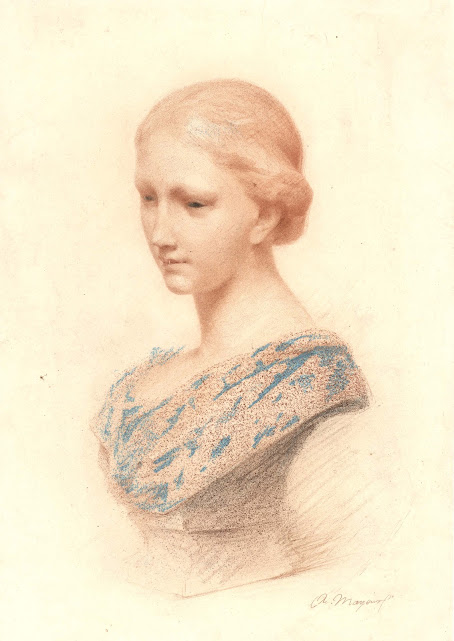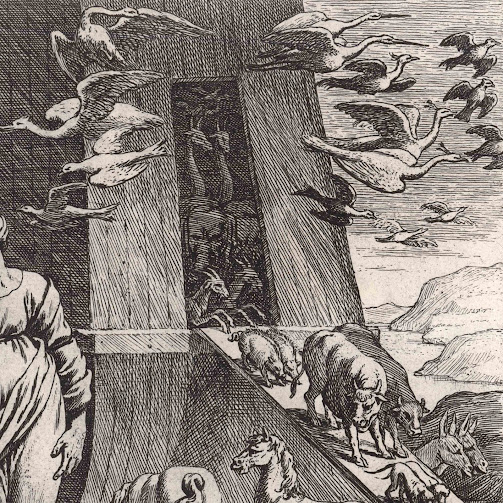Arthur
Mayeur (1871–1934)—French
printmaker, sculptor and medallist
“The Wicar Head,” (aka “Buste de Femme sur Piédouche”; “Tête
de Wicar”), c.1900, after an 17th century Italian bust of a young
woman executed in polychromed wax, terracotta and blown glass by an unidentified
artist (see https://commons.wikimedia.org/wiki/File:T%C3%AAte_de_cire,_dite_T%C3%AAte_de_Wicar,_XVIIe_s,_cire_peinte,_terre_cuite_peinte_et_verre_souffl%C3%A9,_Anonyme,_Italie_(2).jpg).
I suspect that copies of this head were used in the Art Academies of the time as
I have an early charcoal study of the same subject from a French Academy.
Interestingly, Ferdinand Gaillard (1834–1887) also made an exquisite
engraving of the same head, “Tête de Cire” (Wax Head), which I will feature in
a future post (see https://www.britishmuseum.org/collection/object/P_1981-U-436).
Colour
aquatint with stipple engraving, printed in sanguine and blue ink on cream
chine collé on heavy wove paper, signed in the plate by the artist.
Size:
(sheet) 39 x 29.3 cm; (plate) 29.l x 21.5 cm; (chine collé) 28.2 x 20 cm.
Signed
in the plate at lower right: “A. Mayeur[f?]”.
The
Musenor website offers a brief description of this print in the collection of
the Beaux-Arts Museum of Arras at the former Benedictine Abbey of Saint-Vaast, France
(Le Musée des Beaux-Arts d'Arras): https://webmuseo.com/ws/musenor/app/collection/record/30982.
Condition: Apart from a white mark on the figure’s lips, the impression is strong and
well-printed. Beyond minor handling marks, the sheet is in an excellent
condition with no tears, holes, folds, or significant stains.
I
am selling this very beautiful study of a sculpted bust of a young woman displayed
on a pedestal base and finished with the unusual addition of blue accents, for
AU$276 (currently US$188.58/EUR170.72/GBP148.11 at the time of this listing)
including Express Mail (EMS) postage and handling to anywhere in the world, but
not (of course) any import duties/taxes imposed by some countries.
If
you are interested in purchasing this visually striking portrayal of a sculpted
head executed by a fine sculptor-printmaker, please contact me
(oz_jim@printsandprinciples.com) and I will send you a PayPal invoice to make
the payment easy.
This print has been sold


















































